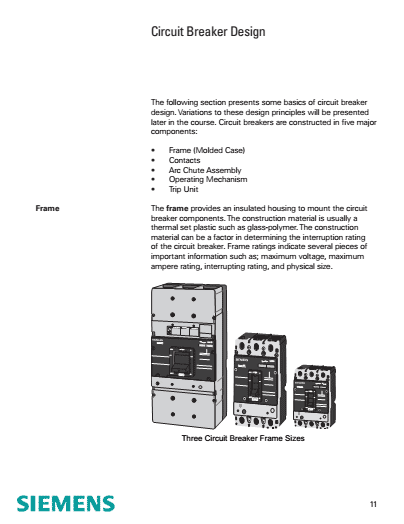Need for Circuit Protection
Current flow in a conductor always generates heat. The greater the current flow, the hotter the conductor. Excess heat is damaging to electrical components and conductor insulation. For that reason, conductors have a rated continuous current carrying capacity or ampacity.

Overcurrent protection devices, such as circuit breakers, are used to protect conductors from excessive current flow.
These protective devices are designed to keep the flow of current in a circuit at a safe level to prevent the circuit conductors from overheating.
Excessive current is referred to as overcurrent. The National Electrical Code® – NEC® defines overcurrent as any current in excess of the rated current of equipm ent or the ampacity of a conductor. It may result from overload, short circuit, or ground fault (Article 1 00-Definitions).
Overloads
An overload occurs when too many devices are operated on a single circuit, or a piece of electrical equipment is made to work harder than it is designed for.
For example, a motor rated for 1 0 amps may draw 20, 30, or more amps in an overload condition. In the following illustration, a package has become jammed on a conveyor, causing the motor to work harder and draw more current.
Conductor Insulation
Motors, of course, are not the only devices that require circuit protection for an overload condition. Every circuit requires some form of protection against overcurrent. Heat is one of the major causes of insulation failure of any electrical component.
High levels of heat can cause the insulation to breakdown and flake off, exposing conductors.
Short Circuits
When two bare conductors touch, either phase to phase or phase to ground, a short circuit occurs. When a short circuit occurs, resistance drops to almost zero. Short circuit current can be thousands of times higher than normal operating current.
Ohm’s Law demonstrates the relationship of current, voltage, and resistance. For example, a 240 volt motor with 24 Ω of resistance would normally draw 10 amps of current.
Types of Overcurrent Protective Devices
Circuit protection would be unnecessary if overloads and short circuits could be eliminated. Unfortunately, overloads and short circuits do occur. To protect a circuit against these currents, a protective device must determine when a fault condition develops and automatically disconnect the electrical equipment from the voltage source.
Short circuits must be interrupted instantaneously. Several devices are available to accomplish this.
| Title: | Basics of Circuit Breakers – SIEMENS |
| Format: | |
| Size: | 5.2 MB |
| Pages: | 88 |
| Download: | Right here | Video Courses | Membership | Download Updates |



Thanks
VERY MUCH INTERESTIGNG AND USEFUL